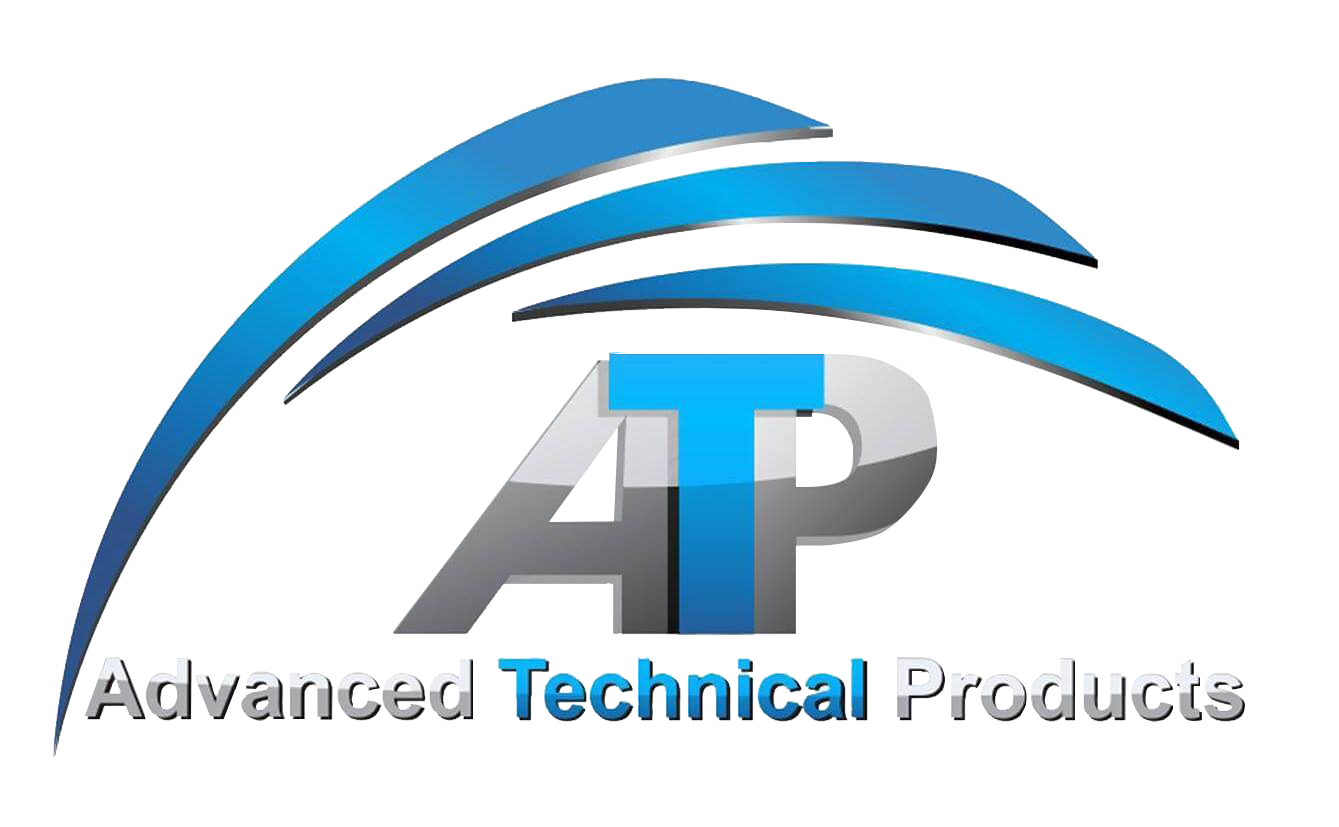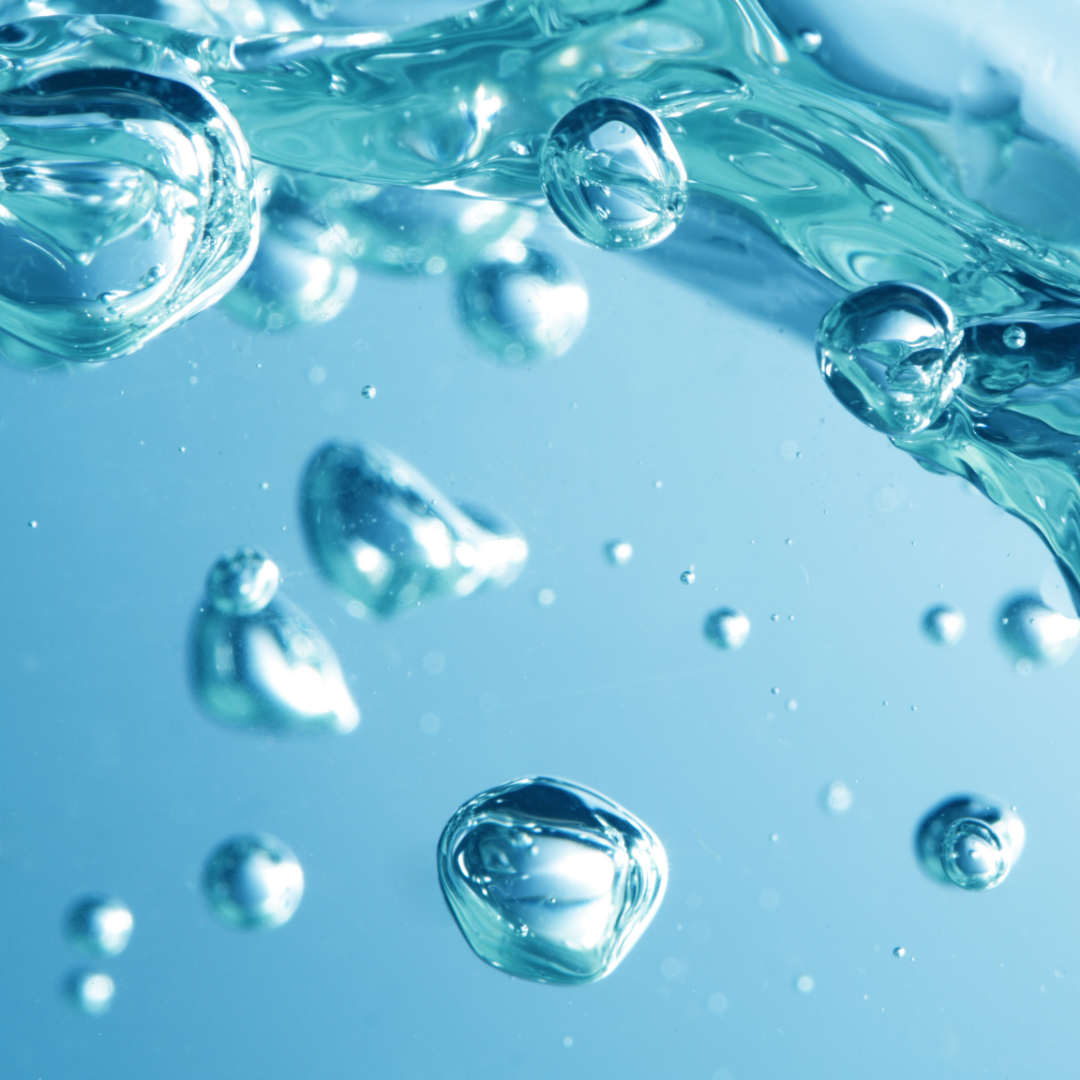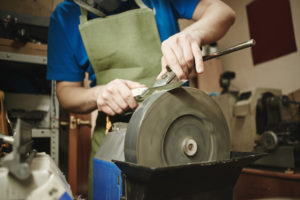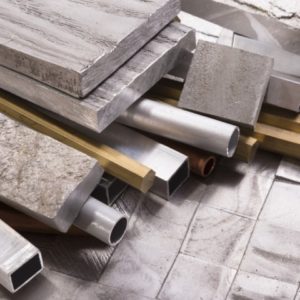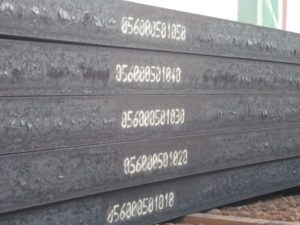Looking for advancements to waterborne coating technology? Consider this.
According to the American Coatings Association:
“The global waterborne coatings market was valued at $73.19 billion in 2017 and predicted to expand at a compound annual growth rate of 5.0% from 2018 to 2026, according to Transparency Market Research. The overall rising interest in sustainability, which manifests in the form of stricter environmental regulations and growing customer/consumer demand for more environmentally friendly products, is the key driver for adoption of waterborne paints and coatings and advancement of resin, additive, and pigment technologies used in their formulation.
“What started as regionally limited projects with the aim of reducing emissions in living spaces, has since become a global movement that has spread out to virtually all areas of application,” says Petra Lenz, technical support manager for Paint Additives at BYK. For example, there is movement in China today as the government introduces stricter regulations, but ultimately, the overarching driver is the desire to improve human health and air quality by reducing emissions—all without compromising on the desired protection that a coating should deliver, explains Monet Talesara, global segment leader for GIF/PC at Dow Coating Materials. “Initiatives to help create safer and more sustainable products are an industry responsibility and always at the forefront of innovation,” agrees Marc Chan, regional marketing manager for Industrial Applications with Clariant.
“On a more granular level, consumers are more aware of the long-term impact that products are having on the environment, which is driving the coatings industry to develop more sustainable paints and coatings from partially or wholly biobased and renewable raw materials. “The finite supply of petroleum and titanium ore, and the increased carbon footprint associated with processing them into polymers and white pigments for use in paints and coatings, is an environmental issue that needs to be solved by all members of the industry’s value chain,” says Melanie Bauer, global marketing director for Coatings at Michelman. “Transitioning to the circular economy means finding alternative sources of biobased and renewable raw materials, as well as extending the functionality of the materials in paints and coatings after their use and promoting the recycling of waste paints.”
“Beyond the environmental advantages, there are additional benefits of waterborne coatings that create incentives for switching from solvent-based systems. For industrial applications, reducing explosion risk and lowering insurance fees is an important factor, according to Dan Weinmann, market development manager for Epoxy Specialties with Hexion. In China, the use of waterborne coatings has led to reduced waste-removal costs because the waste streams for waterborne are lower than those for dangerous solvent-containing wastes, adds David Vanaken, global technology director of Versatics at Hexion. In architectural applications, the lower odor levels of water-based paints are a big driver for their use as building occupants and industry operators become more concerned about solvent odors, according to Steven Reinstadtler, infrastructure marketing manager for Covestro LLC.
“Advances in the performance of waterborne coatings also contribute to their use in a wider range of applications. New advances in these products are allowing formulators to improve performance in areas traditionally dominated by solventborne coatings.
“Advances in the performance of waterborne coatings also contribute to their use in a wider range of applications. “New advances in these products are allowing formulators to improve performance in areas traditionally dominated by solventborne coatings, including direct-to-metal (DTM) coatings and applications where specific properties, such as high gloss, are desired,” says Ron Grieb, application development leader for Coating Resins—Americas at Arkema. Waterborne coatings increasingly deliver performance at an attractive price, making the value more appealing for end users considering adoption, adds Nicholas Sterne, marketing manager for Lubrizol Performance Coatings. “The increase in performance is due not only to advancements in resin chemistry, but also to new additives specifically designed for waterborne formulations,” he explains.
Increasingly Competitive Performance
“There is general agreement within the industry that current waterborne coating technologies for many applications meet or exceed the performance of their solventborne counterparts. “We are starting to see competitive or better performance of waterborne coatings in lighter-duty applications, despite the general perception that waterborne coatings haven’t achieved the performance of solvent-based systems,” says Dow’s Talesara. He adds that while the hurdles to heavy-duty protection are higher, a clear path toward achieving heavier-duty performance in waterborne systems is being realized. Grieb agrees, citing recent resin advancements focused on increasing hydrophobicity that have resulted in improvements in gloss, dry time, water sensitivity, and corrosion resistance. “As a result, waterborne industrial coatings are quickly picking up traction and beginning to transform the common misconception that they cannot withstand the rigorous performance requirements necessary to compete against their solventborne counterparts,” Grieb explains.
“Reinstadtler points to two-component (2K), waterborne polyurethane floor coatings as an example of high-performance, water-based solutions. Waterborne epoxy products that have been formulated to meet application and performance requirements and applied to properly prepared substrates also offer comparable or even superior performance to solvent-based systems, according to Weinmann. Waterborne architectural coatings, of course, also perform well and are often preferred over solvent-based paints for many exterior applications, adds Michael T. Venturini, marketing director for Coatings at Sun Chemical. Waterborne interior latex architectural paints dominate that segment of the market because of their improved performance, ease-of-use, appearance, low odor, and non-yellowing properties, according to Bauer.
“Despite the advances in waterborne solutions, automotive exterior clearcoats and high-corrosion-resistant coatings remain largely solventborne because of manufacturers’ needs for high chemical and weather resistance that cannot yet be achieved with water-based coatings, says Rudiger Mertsch, Market Segment Automotive/Transportation with Evonik. Venturini points out there may also be some performance gaps to close with waterborne automotive interiors. Other exceptions include marine coatings used for protection below the waterline, coatings that must be applied at low temperature, and coatings applied onsite in confined environments, such as oil pipelines and tank interiors, adds Eric Fu, innovation manager for Waterborne Coatings at Huntsman Advanced Materials.
“High quality, water-based alkyds continue to penetrate into markets for wood and metal, where high gloss and adhesion to varied quality and substrate types are needed.
“In general,” Talesara explains, “without regulation, the switch to waterborne needs to be cost neutral with close-to-equal performance. Even with regulation, a large imbalance will not be sustainable for the industry in the long term.”
Building Better Binders
“The advances in waterborne coatings performance are due in part to significant advances in resin technologies, including novel morphologies and crosslinking mechanisms that are effective at ambient temperature, according to Bauer. Newer dispersing technologies that allow for minimal hydrophilic modifications or consume all or part of the hydrophilic groups, and thus achieve good water dispersability and stability, have also been important, according to Fu. In particular, because of their emulsion/dispersion nature, Fu explains, waterborne binders can have much higher molecular weight than solvent-based binders without needing to maintain low solids and high VOCs, which makes waterborne binders very suitable for one-component (1K) applications. “Waterborne coating development has continued the advancement of resins that meet a specific price–performance ratio,” Reinstadtler says.
“In the architectural market, which is dominated by waterborne coatings, there is still a need for water-based resins that can provide consistently high-gloss films and adhere to multiple substrates without significant surface preparation, according to Grieb. “Recent developments in waterborne alkyds have been very exciting to participate in. High quality, water-based alkyds continue to penetrate into markets for wood and metal, where high gloss and adhesion to varied quality and substrate types are needed,” he says. As a replacement for high-gloss, solventborne architectural alkyds with the same look and feel, Arkema has developed SYNAQUA® 4804 alkyd emulsion, an APEO- and ammonia-free, short-oil alkyd emulsion designed for use in a wide variety of coatings with minimal VOC and odor.
“New developments with VOC below 50 g/L and competitive field performance are pushing the boundaries of acrylic emulsion technology.
The chemistry behind vinyl and acrylic emulsion polymer systems has continued to improve as well, according to Vanaken. ‘New resin technologies that enable highly water-resistant binders, low odor, and aldehyde abatement make these very attractive systems,’ he explains. Vinyl and acrylic emulsion polymers modified with Hexion’s branched vinyl ester monomers show an increased alkali resistance, very good and long-lasting water repellence, as well as improved dry and wet adhesion to low-surface-energy substrates, making them ideal for wood stains, exterior masonry coatings, and elastomeric roof coatings, Vanaken says. Waterborne epoxy binder systems have progressed from those suitable for concrete and masonry protection to systems that provide light- to medium-duty protection on metal to systems such as NewGen™ Epoxy System from Hexion that offers superior corrosion protection, according to Weinmann. ‘In recent years, it has progressed to the point where there are now systems available for waterborne, zinc-rich primers, for more economical binder cost, and for improved stone-chip resistance and flexibility,’ he notes. Hexion recently introduced AQUAREOUS™ Epoxy Dispersions that can be formulated at ultra-low VOC levels (1–50 g/L) and perform like their solventborne counterparts, he adds. The dispersions, which have passed rigorous testing by the eco-INSTITUT in Europe can be cured with solvent-free curing agents in corrosion-resistant primers, midcoats, and epoxy floor coatings.
“One desired attribute for a large portion of the waterborne market is the ease of use of a 1K coating while retaining very good properties, according to Reinstadtler. ‘Historically, this goal has been a pipe dream—up there with a coating that leaps out of the can and applies itself. However, in the polyurethane-dispersion development area, there are several new resins that allow for the formulation of 1K waterborne polyurethane coatings that have the ease of use of a 1K waterborne coating, but with properties similar to a traditional two-component (2K) solventborne or waterborne coating,’ he says. This technology is being leveraged in coatings for the maintenance or refurbishment of onsite wood floors and cabinetry and the sealing and renovation of exterior brick pavers or decorative concrete.
“For 1K water-reducible, wood-floor coatings, Covestro has developed Bayhydrol® UH 2874, an aliphatic, fatty-acid-modified, anionic polyurethane dispersion, and Bayhydrol A 2846 XP, a self-crosslinking, hydroxyfunctional polyacrylate dispersion. For concrete floors and brick pavers, Bayhydrol UH XP 2592, an aliphatic, oxidatively curing polyester-polyurethane dispersion, and Impranil® DL 2077, an anionic polycarbonate polyurethane dispersion, can be formulated into high-performance 1K PU concrete sealers that protect from staining and chemical attack while still being easy to use by less experienced contractors, Reinstadtler explains.
“In the polyurethane-dispersion development area, there are several new resins that allow for the formulation of 1K waterborne polyurethane coatings that have the ease of use of a 1K waterborne coating.
Lubrizol has also focused on the development of high-performance 1K waterborne coatings. The company recently introduced a new class of waterborne PU dispersions with its Aptalon™ Polyamide Polyurethane technology. The binders are produced using polyamide polyols that are designed to deliver a unique set of protective properties, including excellent clarity, hardness, and chemical and abrasion resistance, and that compete with 2K solvent-based coatings, according to Sterne.
“Looking at the industrial coatings segment, Grieb says he believes there is great potential for waterborne acrylic emulsions to find greater use, particularly in protective field-applied coatings, such as direct-to-metal (DTM) binders. “New developments with VOC below 50 g/L and competitive field performance are pushing the boundaries of acrylic emulsion technology,” he says. Leo Procopio, senior TS&D scientist with Dow Coating Materials agrees that today’s waterborne acrylics push the envelope on the level of corrosion resistance they provide. He points to Dow’s AVANSE latex-pigment composite technology, which facilitates the formation of films with much better barrier properties, resulting in not just enhanced corrosion protection but also improved weatherability, as well as the company’s MAINCOTE 4950 and MAINCOTE 5045, binders capable of gloss DTM finishes at < 50 g/L and < 25 g/L, respectively.
“Waterborne 2K coatings with improved performance are also being developed, according to Procopio. Dow’s MAINCOTE AEH acrylic-epoxy hybrid technology, for example, combines the benefits of acrylic and epoxy coatings in a low-VOC 2K waterborne hybrid. Performance such as corrosion resistance and chemical/solvent-resistance approaches that of solventborne epoxy coatings, while exterior durability and flexibility surpass those of solvent-based epoxies. Hexion has developed a novel method for producing resins for 2K PU waterborne topcoats in a one-step process using its Cardura™ glycidyl ester, enabling clearcoats that are very durable and quick drying in combination with improved appearance, according to Vanaken. ‘This method is faster and more energy efficient than the traditional polymerization process,’ he says. A nonisocyanate waterborne 2K system from allnex designed for industrial coating applications leverage’s the company’s Acure technology, which features reduced VOCs, greatly improved appearance, and high-film-build-popping resistance, according to Robert Skarvan, global marketing director—LRA at allnex. Meanwhile, Evonik has developed waterborne silicone-polyester binders for environmentally friendly heat-and-cook bakeware coatings, introduced a new concept for waterborne, zinc-rich primers based on oligomer silane technology, and launched topcoats based on a silicone-epoxy resin that is compliant with increasing demands from regulatory authorities worldwide, according to Mertsch.
Advancing Additive Attributes
“Advances in additive technologies have been equally important for the development of higher-performing waterborne coatings. Due to the high surface tension of water, the correct pigments must be used, wetted, and stabilized in the system, the viscosity must be checked for an optimum coating production, and active defoaming is essential, according to BYK’s Lenz. ‘The very nature of waterborne coatings made the control of properties such as defoaming, flow and leveling, hiding, and mar- and block-resistance challenging,’ agrees Frank Cangelosi, vice president of Marketing for Troy Corporation. Additives are used to address these issues. Mertsch notes that recent advances enable formulators to overcome surface-tension barriers and macro/micro foam, achieving the same level of performance as solventborne systems. ‘Multifunctional performance additives that perform the jobs of several additives at one low-use rate will continue to play an important role in waterborne coatings,’ Cangelosi says.
“Recent advances enable formulators to overcome surface-tension barriers and macro/micro foam, achieving the same level of performance as solventborne systems.
“Troy, for instance, introduced its Z-line of performance additives for ‘green’ waterborne coatings, offering performance enhancements with little or no contribution of VOC, APE, or HAPs. The latest additions have been to the Troysperse™ ZWD series of multifunctional dispersants, according to Cangelosi. Sterne agrees, pointing to the new dispersant technologies that allow for better color development and deliver functional properties such as water resistance. Sterne notes that Lubrizol’s Solsperse™ W-Series Hyperdispersants have shown excellent efficiency in waterborne formulations by reducing the amount of dispersant needed, lowering water sensitivity, and decreasing grind times.
“Key advances have also been made with respect to rheology modifiers, according to Bauer. ‘Gone are the days of cellulosic thickener-based paints that display substantial amounts of splatter and dripping. Formulators can now provide coatings with performance properties such as coverage with one coat application, scuff resistance, smooth finish, and uniform appearance and color,’ she says. As specific examples, Grieb points to rheology modifiers and coalescents based on soy bean and linseed oil derivatives that have zero VOCs and more than 95% renewable content. ‘These additives are manufactured at facilities that meet extremely high environmental standards, have zero waste discharge, and are cost neutral to their petrochemical based counterparts,’ Grieb says.
“New surfactants based on epoxide chemistry are also helping achieve higher performance standards for early water resistance, adhesion, and durability of waterborne coatings and elastomers, Grieb adds. “New surface modifiers are easier to incorporate into water for easy production, and can improve the durability, feel, and appearance,” agrees Sterne. A particularly important advance in this area has been the development of innovative replacements for APEO/NPEO surfactants that offer improved ease of use over initial generation materials while advancing performance in areas such as leaching and open time, according to Clariant’s Chan.
“New surfactants based on epoxide chemistry are also helping achieve higher performance standards for early water resistance, adhesion, and durability of waterborne coatings and elastomers.
A new adhesion promotor from ADDAPT Chemicals BV leverages Hexion’s VeoVa™ vinyl ester monomer as a reactive diluent. The VeoPox™ range of hybrid polymer adhesion promotor additives are intended for use with epoxy, alkyd, and acrylic binders. These additives provide improved adhesion on different substrates and corrosion protection in DTM applications, according to Vanaken.
“Looking ahead to future developments, Huntsman’s Fu says the exciting additive technologies to watch for include nanomaterials and graphene, which many companies have begun to explore in waterborne coating systems.
Perfecting Pigment Performance
“Because water and solvents have very different properties, the pigments used in waterborne and solvent-based coatings must have different properites as well. ‘At Sun Chemical, we use a whole suite of technology solutions to manage rheology, anti-flocculation, color development, and stability. The technology used to achieve these characteristics is very different from what is used to develop solventborne coatings,’ explains Venturini. Important advances in pigment technology for waterborne coatings have revolved around the development of surface modifications to make pigments more compatible with aqueous formulations, he notes. ‘Today, we can achieve the same colors as in solventborne,’ Venturini says. ‘We’re making incremental improvements in other ways, such as improved stability and lightfastness in pigments to help paints be more durable. Both the pigments and paints evolve together.’
“One significant advancement in pigment technology, according to Bauer, has been the joining of polymers and pigments for more effective pigment spacing and dispersion to achieve more lightweight paints, increased cost savings, and greater pigment efficiency.
“Hybrid waterborne binders that are environmentally friendly and provide better wet adhesion, can be applied in varying temperature and humidity conditions, and offer hydrophobicity, faster cure, increased hardness, chemical resistance, and corrosion resistance.
“An area for further development, notes Grieb, relates to the need for alternatives to titanium dioxide (TiO2). The pigment is important for providing whiteness and opacity, but it presents challenges in terms of cost and availability. In addition, there are new regulations in Europe regarding the labeling and use of TiO2 powder during the production of paints and coatings because it is categorized as a hazardous material. Arkema has introduced CELOCOR® polymers and CELOCOR AF opaque polymers, which are highly efficient, voided latex products designed to improve hiding and whiteness in paints and coatings, and function as a partial replacement for TiO2.
“According to Mertsch, other development trends focus on achieving higher chroma and more brilliance with the same amount of pigments and increasing the ease of processability, which has been partially addressed to date with dispersing additives suitable for pigment concentrates rather than dispersing aids for individual grinding.
Challenges to Be Tackled
“Despite the growing interest in water-based paints and coatings, there are a number of difficulties that formulators and ingredient suppliers continue to address. A nontechnical issue relates to the higher cost of waterborne systems. ‘To achieve high performance requires the use of specialty additives, pigments, fillers, and modifiers that are more expensive than their solventborne alternatives,’ Weinmann explains. ‘A remaining gap is therefore related to improving the robustness of these waterborne binders; improved robustness allows formulators more latitude to select additives and formulation tools that are less expensive.’
“Many applications also require more energy input to achieve water release than is needed for solvent evaporation, according to Mertsch. ‘Reducing the costs of overall coating formulations and the environmental impacts of drying—as well as increasing the sustainability of raw materials, particularly through the use of biobased ingredients—are important issues that must be tackled,’ he says.
“At the heart of most problems with waterborne coatings is the fact that they have water in them, according to Skarvan. Formulating with waterborne binders remains challenging compared to solvent-based resins and requires careful attention to the addition of raw materials, pH control, and actual blending at high speeds, according to Grieb. Additional educational resources and experience for companies that want to develop waterborne coatings would accelerate the development of the technology, adds Sterne. Meeting reduced VOCs and HAPs requirements, while still achieving desired attributes with respect to reproducible film formation and adhesion, are difficult without the use of coalescing solvents, according to Reinstadtler. ‘At lower solvent levels, coating formulators must rely more on the inherent properties of newly developed waterborne resins and additives to tackle these challenges,’ he says.
“Exciting additive technologies to watch for include nanomaterials and graphene.
“The biggest challenge to address any remaining performance gaps is in the area of application, according to most experts. ‘Waterborne systems can provide equal performance to solvent-based systems; the main challenge is getting the coating applied and cured optimally. For instance, in the automotive OEM sector, waterborne paints are more difficult to apply and cure and typically require a substantial investment in spray equipment, booths, and ovens,’ Skarvan observes. Fu adds that applicators generally need to have high-level training to fully achieve the performance expected in a waterborne formulation. For non-professionals, the short open time makes is harder to get paint jobs done before the paint starts to solidify in the can, according to Bauer. She also notes that waterborne coatings can also cause flash rust on metallic substrates and grain raising on wood.
“’The development of raw materials and resulting waterborne coating formulations that enable robust application characteristics (e.g., spray quality and drying behavior) and end performance across a wide range of environmental conditions (e.g., temperature, humidity) in field and factory applied coatings is an important current target,’ says Stewart Williams, global marketing manager for Additives at Dow.
“Waterborne formulations should be optimized to resolve potential issues such as air entrapment, foaming, and lower sag resistance, adds Weinmann. ‘In addition to proper surface preparation, film formation and coalescence are critical for coatings based on dispersions; therefore, controlling the temperature and relative humidity of the application is important,’ he says. He goes on to note that paint shops and application lines are ideally suited for waterborne coatings and often located in areas where NESHAPS and VOC emission bubbles are most stringent. Out in the field, however, applicators can experience a wide range of humidity and temperature conditions, and there is the potential for unexpected pop-up rain showers, so it is crucial to understand the application window.
“It is also important to understand the potential for microorganism growth in aqueous formulations, which can result in contamination issues in the wet state. ‘Wet-state preservatives are added to paints and coatings to inhibit the growth of bacteria, fungi, and yeast species and offer an effective solution,’ Cangelosi explains. He adds that suppliers such as Troy offer advanced wet-state preservatives without compromising ‘green’ or sustainability standards. ‘The most effective wet-state preservatives today are multiactive combinations, such as Troy’s advanced Mergal® and Nuosept® products, which provide protection against a broad spectrum of microbes with an optimized balance of quick kill and long-term preservation,’ he says.
“Leaching resistance enables longer-lasting coatings protection well beyond that of conventional preservatives combined with reduced environmental impact.
“Other areas that need improvement: binders with improved storage stability and longer shelf life, and binders that can be formulated at higher solids levels. ‘The solids content of waterborne binders is usually lower than solvent-based binders, and the lower solids content makes it harder to get enough dry-film-thickness to achieve the same level of performance,’ Bauer says. Waterborne binders could reach similar performance to solvent-based binders by achieving the same level of solids content, she says. Waterborne coatings can also be more difficult to repair, which can lead to a higher scrap rate and greater waste during manufacturing, according to Sterne.
“Hybrid waterborne binders that are environmentally friendly and provide better wet adhesion, can be applied in varying temperature and humidity conditions, and offer hydrophobicity, faster cure, increased hardness, chemical resistance, and corrosion resistance will be important for addressing performance gaps that remain with water-based coating systems, according to Grieb.
“On the additive front, there are new technologies for anti-adhesion additives or co-binders for reducing dirt pickup, providing better anti-fingerprint performance, and imparting ice resistance, particularly for wind mills and ACE applications, according to Mertsch. He also notes that additives are needed for coatings used in wet-on-wet processes that have reduced influence on rheology and enhanced anti-pinhole properties.
Overcoming Ingredient Issues
“Although waterborne coatings are generally seen as more environmentally friendly than solvent-based systems, some questions have been raised about certain additives used in water-based formulations. For example, alkyl phenol ethoxylate (APEO) surfactants are banned in Europe, and most ingredient suppliers and coating formulators have moved or are moving to products that do not contain these compounds.
“’Resin manufacturers must provide formulators with the information and products they need to develop a wide range of coatings. Part of that responsibility is to make sure they have the tools needed to formulate products that deliver the performance customers need, while meeting both regulatory requirements and the broader sustainability goals,’ Grieb says. Arkema’s EnVia® brand certification program was developed to achieve this goal. Products with the EnVia tradename have no added APEO surfactants or formaldehyde or formaldehyde donors, no intentionally added carcinogens, reproductive toxins or ozone depleting compounds, low residual monomer levels (total monomer < 500 ppm), and total latex VOC < 5 g/L. ‘This program is helping formulators make more educated decisions and is setting the stage for future advances and best practices, where companies such as ours work hand-in-hand to assist customers in scientific analyses to better understand the potential environmental impact of our products and formulations made with our products,’ Grieb explains.
“The second area of concern relates to the need for biocides in waterborne coatings. Preserving waterborne paints and coatings in the wet-state has been dealt significant challenges, according to Cangelosi. ‘Regulatory legislation, in the EU in particular, has decreased the list of available active chemistries that formulators can choose from,’ he says. The elimination of biocides such as isothiazolinones (BIT, MIT, etc.) for toxicological reasons, is making it more difficult to protect waterborne paints and coatings against microbial activity, adds Bauer. ‘Currently, there are no direct substitutions that are non-hazardous and equally effective,’ she says. Combined with supply shortages of specific chemistries, such as those experienced this year with BIT, these restrictions are driving manufacturers and suppliers to search for alternative solutions.
“Internationally, consumer preference is growing for products that address problems of air and water pollution and help protect the environment, food and water sources, and help lower the carbon footprint.
Some companies, in fact, are looking for non-biocidal solutions. Evonik is developing a new mechanism for preservation that is biocide-free yet prevents contamination of waterborne dispersions, according to Mertsch. One approach, says Hexion’s Vanaken, is to formulate binders at high pH to inhibit growth of microorganisms. Vanora, a Swiss polymer dispersion manufacturer, has leveraged Hexion’s VeoCryl technology, which combines VeoVa vinyl ester and acrylate monomers, to develop a biocide-free emulsion polymer. The new dispersion contains water glass, also known as sodium silicate, to increase the pH and a stabilized hydrophobic polymer based on VeoVa vinyl ester, providing both alkaline and water resistance.
“There are also factors that must be considered when using dry-film preservatives, particularly the leaching of biocides from applied coatings. Encapsulation of active chemistries is one way of achieving high performance and sustainability goals, according to Cangelosi. ‘Leaching resistance enables longer-lasting coatings protection well beyond that of conventional preservatives combined with reduced environmental impact, as less chemical material is leached into the environment,’ he says. Troy has introduced an expanding portfolio of controlled release (CR) dry-film preservatives that offer enhanced resistance to leaching of the active substance, including new Polyphase® and Troysan® CR preservatives.
An Issue of Perception
“Consumers have accepted waterborne decorative coatings for their ease of use and ability to beautify. Outside of those applications, says Grieb, the primary challenge is a perception that they will not perform like traditional solventborne materials, despite plenty of technical evidence to the contrary. Talesara agrees. ‘Despite the fact that we have seen waterborne products that exceed the corrosion resistance of their solventborne counterparts, many are still skeptical of applying a waterborne product to a metal substrate in order to increase corrosion resistance,’ she says. This lack of confidence is due to a gap in experience in applications where the adoption of water-based systems only began in recent years, according to Lenz. There is also a perception, adds Venturini, that powder coatings are superior in terms of performance and environmental benefits, even though waterborne paints can offer many of the same benefits and the performance gap has actually closed.
“’While waterborne coatings do have an extra layer of complexity, that complexity can and is being managed. There really is no downside or upside to waterborne coatings; it depends a great deal on what the paint formulator requires or needs,’ Venturini says. The key to changing that perception, according to Grieb, is greater cooperation between resin manufacturers, formulators, and applicators to show the real benefits of waterborne binders.
Some Final Thoughts on Waterborne Technology
“With more than half of all coatings water-based and a general expectation that the segment will continue to see above average growth, there is a real need to improve the perception of waterborne coating performance, according to Lenz. At the same time, it is important to recognize that there are several other sustainable coating technologies available to end users, including high-solids solventborne, solvent-free, powder, and UV-curing systems. ‘Each of these types of coating has its edge over others and in the meantime faces its own challenges,’ says Fu. Long-term, the coatings industry will also need to access more sustainable feedstocks, as both petrochemical-based polymers and titanium ore are proving increasingly harmful to the global environment, adds Bauer. Going forward, Skarvan notes, the industry is also going to need to carefully assess the benefits of using waterborne systems for industrial applications versus the rather significant increase in the carbon footprint for the energy needed to cure these systems.
“Global harmonization of product quality and safety standards is another important trend. Internationally, consumer preference is growing for products that address problems of air and water pollution and help protect the environment, food and water sources, and help lower the carbon footprint. Product development for waterborne binders must therefore be more global than regional, and suppliers of waterborne coatings must become more global in their approach,’ Grieb concludes.”
